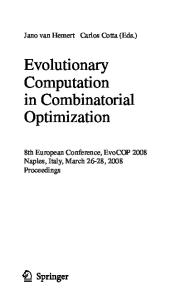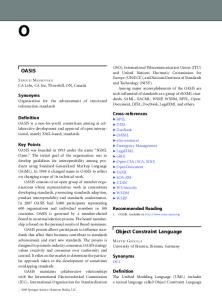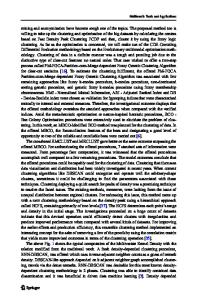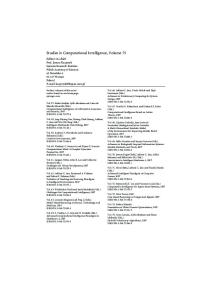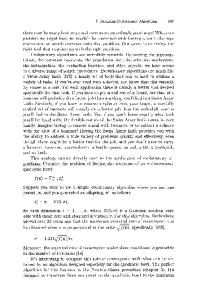Multimodal Optimization by Means of Evolutionary Algorithms
This book offers the first comprehensive taxonomy for multimodal optimization algorithms, work with its root in topics such as niching, parallel evolutionary algorithms, and global optimization. The author explains niching in evolutionary algorithms and i
- PDF / 6,515,200 Bytes
- 206 Pages / 439.43 x 683.15 pts Page_size
- 84 Downloads / 443 Views
Mike Preuss
Multimodal Optimization by Means of Evolutionary Algorithms
Natural Computing Series Series Editors: G. Rozenberg Th. Bäck A.E. Eiben J.N. Kok H.P. Spaink Leiden Center for Natural Computing
Advisory Board: S. Amari G. Brassard K.A. De Jong C.C.A.M. Gielen T. Head L. Kari L. Landweber T. Martinetz Z. Michalewicz M.C. Mozer E. Oja G. Paun J. Reif H. Rubin A. Salomaa M. Schoenauer ˘ H.-P. Schwefel C. Torras D. Whitley E. Winfree J.M. Zurada
More information about this series at http://www.springer.com/series/4190
Mike Preuss
Multimodal Optimization by Means of Evolutionary Algorithms
Mike Preuss Lehrstuhl für Wirtschaftsinformatik und Statistik Westfälische Wilhelms-Universität Münster Münster, Germany Series Editors G. Rozenberg (Managing Editor) Th. Bäck, J.N. Kok, H.P. Spaink Leiden Center for Natural Computing Leiden University Leiden, The Netherlands A.E. Eiben VU University Amsterdam The Netherlands
ISSN 1619-7127 Natural Computing Series ISBN 978-3-319-07406-1 ISBN 978-3-319-07407-8 (eBook) DOI 10.1007/978-3-319-07407-8 Library of Congress Control Number: 2015956174 Springer Cham Heidelberg New York Dordrecht London © Springer International Publishing Switzerland 2015 This work is subject to copyright. All rights are reserved by the Publisher, whether the whole or part of the material is concerned, specifically the rights of translation, reprinting, reuse of illustrations, recitation, broadcasting, reproduction on microfilms or in any other physical way, and transmission or information storage and retrieval, electronic adaptation, computer software, or by similar or dissimilar methodology now known or hereafter developed. The use of general descriptive names, registered names, trademarks, service marks, etc. in this publication does not imply, even in the absence of a specific statement, that such names are exempt from the relevant protective laws and regulations and therefore free for general use. The publisher, the authors and the editors are safe to assume that the advice and information in this book are believed to be true and accurate at the date of publication. Neither the publisher nor the authors or the editors give a warranty, express or implied, with respect to the material contained herein or for any errors or omissions that may have been made. Printed on acid-free paper Springer International Publishing AG Switzerland is part of Springer Science+Business Media (www.springer.com)
to Carla
Foreword Half a century ago, with more and more computers available at university and research labs, numerical optimization became en vogue. Direct search methods like those of Rosenbrock, Nelder & Mead, and M.J.D. Powell, to name just a few, helped to solve a lot of nonlinear, analytically intractable problems approximately. Unfortunately, such hill climbers found their way to only one local minimum or maximum in the vicinity of the given starting points in the search space. The case of multiple local optima seemed to be better treated by population-based methods like evolutionary algori
Data Loading...

